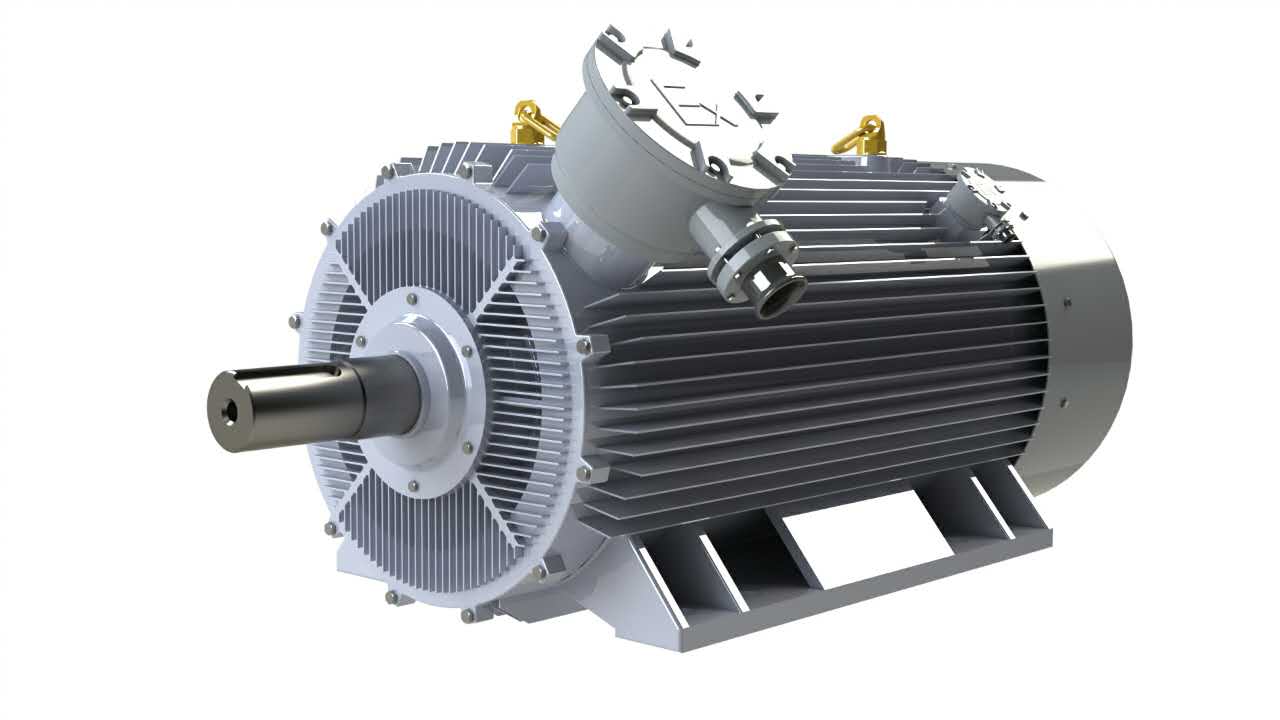Regardless of the type of frequency converter, different levels of harmonic voltages and harmonic currents are generated during operation, so that three-phase asynchronous motors run at non-sinusoidal voltage and current. Among them, higher harmonics have a greater impact on the operating efficiency and temperature rise of ordinary asynchronous motors. Higher harmonics will increase the stator copper consumption, rotor copper (aluminum) consumption, iron consumption and additional losses of three-phase asynchronous motors. The most significant is the rotor copper (aluminum) consumption. Because the three-phase asynchronous motor rotates at a synchronous speed close to the frequency of the fundamental wave, a large rotor loss will occur after the high harmonic voltage cuts the rotor guide bar with a large slip. In addition, the additional copper loss due to the skin effect needs to be considered. These losses will cause the ordinary asynchronous motor to generate additional heat, reduce efficiency, and reduce output power. For example, if a three-phase asynchronous motor is operated under the non-sinusoidal power output of the inverter, its temperature rise will generally increase by 10% to 20%.

①Insulation strength of three-phase asynchronous motor
At present, most small and medium frequency converters use PWM (pulse width modulation) control methods. Its carrier frequency is about several thousands to several ten kilohertz, which makes the stator windings of three-phase asynchronous motors to withstand a very high voltage rise rate, which is equivalent to applying a steep shock voltage to three-phase asynchronous motors. The inter-turn insulation of a phase asynchronous motor withstands severe tests. In addition, the rectangular chopped surge voltage generated by the PWM inverter is superimposed on the operating voltage of the three-phase asynchronous motor, which poses a threat to the ground insulation of the three-phase asynchronous motor, and the ground insulation will accelerate aging under repeated high-voltage shocks.
② Harmonic electromagnetic noise and vibration
When a three-phase asynchronous motor is powered by an inverter, the vibration and noise caused by electromagnetic, mechanical, and ventilation factors will become more complicated. Each time harmonic contained in the variable frequency power supply interferes with the inherent space harmonics of the electromagnetic part of the three-phase asynchronous motor to form various electromagnetic excitation forces. When the frequency of the electromagnetic force wave is the same as or close to the natural vibration frequency of the ordinary asynchronous motor body, a resonance phenomenon will occur, thereby increasing noise. Since the three-phase asynchronous motor has a wide operating frequency range and a large speed variation range, it is difficult for the frequency of various electromagnetic force waves to avoid the natural vibration frequency of each component of the three-phase asynchronous motor.
③ Adaptability of three-phase asynchronous motors to frequent starting and braking
After the inverter is used to supply power, the three-phase asynchronous motor can be started at a low frequency and voltage in a non-rush current manner, and can use various braking methods provided by the inverter to perform rapid braking. The conditions of brake and brake have been created, so the mechanical system and electromagnetic system of the three-phase asynchronous motor are under the effect of cyclic alternating force, which brings fatigue and accelerated aging problems to the mechanical structure and the insulation structure.
④ Cooling problem of three-phase asynchronous motor at low speed
First, the impedance of the three-phase asynchronous motor is not ideal. When the power frequency is low, the losses caused by high-order harmonics in the power supply are large. Secondly, when the rotation speed of the ordinary asynchronous motor is reduced, the ratio of the cooling air volume to the third-order speed of the rotation speed is reduced, which causes the low-speed cooling condition of the three-phase asynchronous motor to deteriorate, the temperature rise sharply, and it is difficult to achieve constant torque output.

